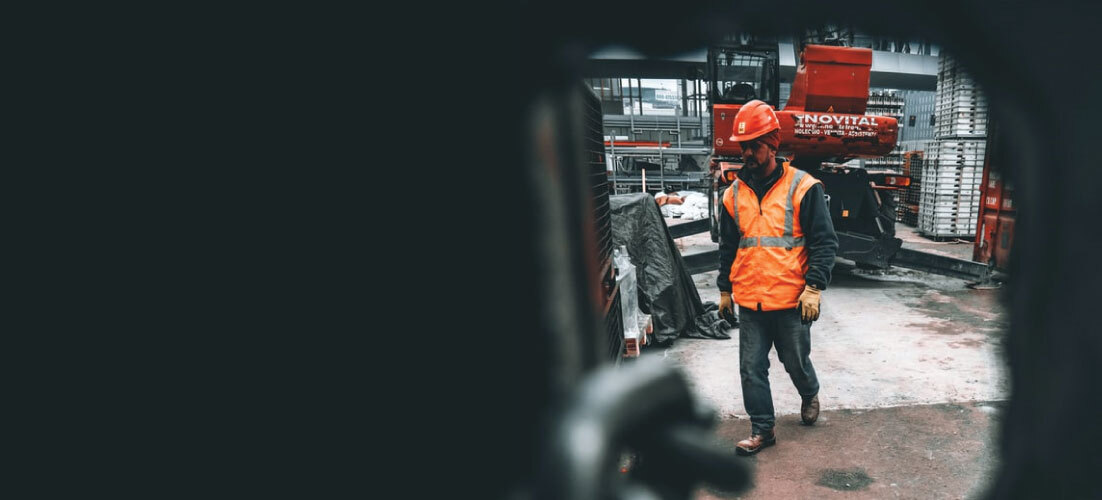
Share this Post
PUBLISHED
May 21, 2020
WRITTEN BY
Adrian Bartha
As safety leaders around the world focus on the physical health of their teams, I can’t help but think about the mental health of our colleagues whether they are on-site, off-site, essential workers (or not). One report showed the number of prescriptions for anti-anxiety medication increased by 34% between mid-February and mid-March. It is easy to forget our wellbeing entails both our body and mind, and it is vital we do what we can to protect both – especially now.
As leaders we also have a responsibility to demonstrate a clear path forward, despite uncertainty. Clear paths amidst uncertainty is not a contradiction – it is reconciled when we create environments where each individual can somehow contribute to making tomorrow better than yesterday. And yes, there are silver linings emerging as we outlined last month.
Reflecting on the last few weeks and the 75th anniversary of Victory in Europe, reminds us that much of safety and the conveniences we enjoy today are the result of that forward-looking mindset and determination to make tomorrow better than yesterday, despite the odds. And here we are again with another challenge to overcome. How? Here’s what we’ve seen…
1. Take care of yourself first
As the saying goes, “You can’t pour from an empty cup”. It is vital we are mentally strong enough to be pillars for our colleagues. To lead selflessly is not to be selfish, but it starts by being at our best.
I have found having something to look forward to each day has helped me stay positive, like experimenting with recipes in the kitchen as a family to finding natural spots close to my home to get fresh air and away from it all. These are probably things I wouldn’t have made time for before.
Furthermore, practicing gratitude and focusing on the small blessings in my life has also played a big role in boosting my overall wellbeing.
2. Speak from your heart
Simply increasing frequency of communication with our colleagues and checking in with them more regularly was a start. Building on this, I’ve tried to create enough space where people are comfortable enough to share their feelings more openly. I’ve had mixed results: many I’ve gotten to know much better than I would have without this crisis and with some colleagues newer to our organization, I know it simply takes time, especially given it’s all video calls for me.
Industries such as construction, manufacturing, and energy are home to many men and women who believe they have to be tough at all times. After all, these are tough industries! However, let it start with you: destigmatize mental health and show them it’s okay to talk about how they’re feeling or others they are worried about. Some things we’ve tried:
- I started by sharing more about my own personal situation and worries I have about my wife who is a front-line healthcare worker (something I probably wouldn’t have done before).
- We recently held a Mental Health Webinar where team members were encouraged to share specific practices which have helped them stay strong during this time. Naturally, much of this is private so we ensure there is a clear path to external sources such as helplines or other digital platforms available for addressing these topics confidentially.
3. See the signs
It is important to acknowledge everyone deals with anxiety in their own way. Some may be vocal while others may choose to stay silent, preferring to keep their emotions below the surface. It is of the utmost importance to be able to discern any warning signs so you can take action early.
Prior to the pandemic, the construction industry had one of the highest rates of suicide. And now, many in the oil & gas industry are facing further headwinds. I can only imagine how feelings of distress have amplified during this time. Some may hide symptoms because they feel it creates economic security to support their families. Therefore, supervisors can use the fast-paced changing environment as a catalyst for conversations on what is often hidden as a good start to identifying at-risk employees early. Examples:
- Many industrial companies are encouraging crews to stay relatively constant to prevent the spread of infections, but this is also an opportunity to have colleagues open up with each other more and be more deliberate with how supervisors guide those discussions.
- One customer of ours does daily trivia via text message to try something fun and distracting but uses it as a tool to identify employees who are less engaged and may be at risk.
- Start each day with a daily video call with everyone at the same time for 5 minutes to ensure social interaction at the beginning of the workday. We’re trying “walking meetings” where colleagues conduct a meeting virtually while walking outside (and socially distancing) if possible.
What it comes down to is…
Take the time to check in with your team and speak from the heart. And remember, always start with being at your best. As Andy Grove, former CEO of Intel said, “Bad companies are destroyed by crisis, Good companies survive them, Great companies are improved by them.” This is an opportunity to strengthen our bond with our people, strengthen our teams, and earn our way to be those great companies he spoke of.
How has your organization been tackling mental health? I’d love to hear the tactics you have implemented. Share your thoughts with me at Adrian.bartha@ecompliance.com
Stay safe out there,
Adrian
PS: In our commitment to providing our community with resources to stay safe, we have created a Complimentary COVID-19 Product Offering to help organizations in essential industries like yours, stay equipped against COVID-19. Check it out here.
Rethinking Safety
Drive employee engagement by connecting
your frontline to your boardroom.
Learn how Maxim Group is fighting COVID-19 with innovative tools from eCompliance's toolbox
READ CASE STUDY